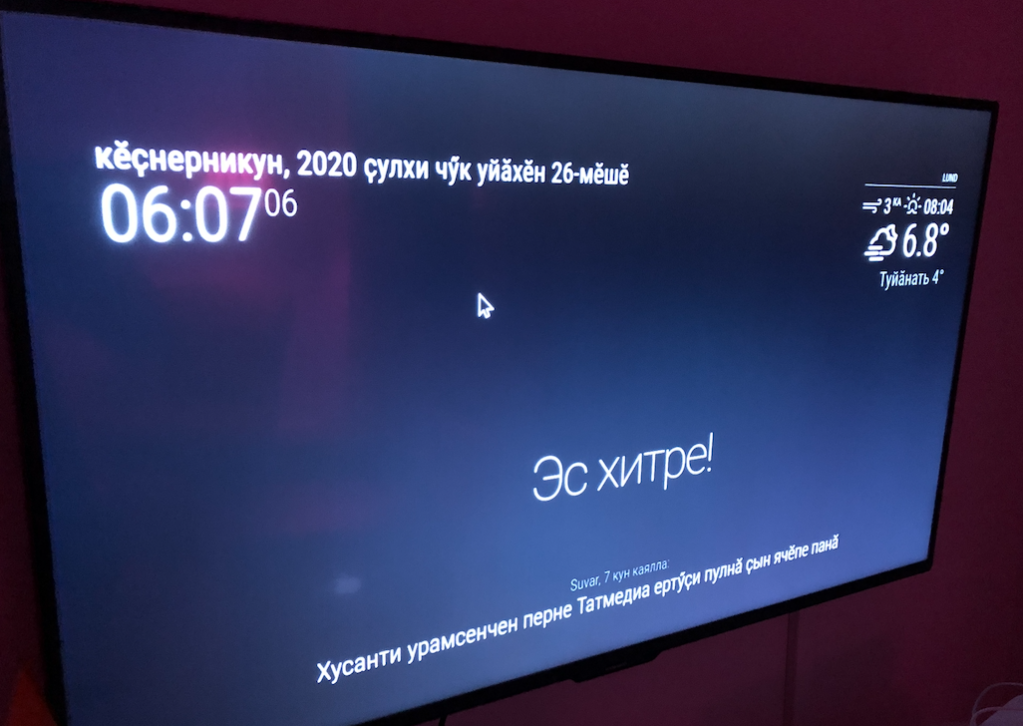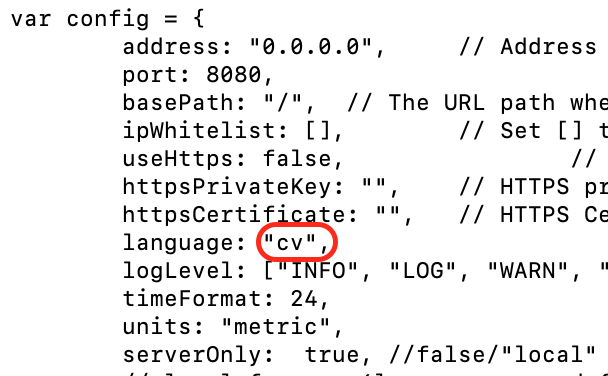MagicMirror2 and Chuvash
By Anatoly Mironov
This post is about my setup of the popular MagicMirror2 application. I show the steps needed to set it up on a Raspberry Pi Zero W and connect it to a TV set. As a bonus, I share my thoughts on the Chuvash localization work.
MagicMirror2 is a DIY project and an open-source application, voted to number one of the best Raspberry Pi Projects. In essence, it shows information of your choice (weather, calendar, news) on a screen that is embedded in a mirror.
I was introduced to MagicMirror2 by my colleague, who uses it in another way: rather than having it in a mirror, he has it on his smart tv. The customisability is the beauty of the whole DIY and the Raspberry Pi.
Installation
I also decided to use it on my tv, through the built-in web browser. My raspberry pi zero w required some special steps due to its processor architecture. Fortunately, I found a guide for MagicMirror2 and Raspberry Pi Zero W which I used as a starting point.
After trying it, I found that I needed those steps for my server-only magic:
- Install node and npm for armv6l
- Clone the MagicMirror
- Install npm packages targeting the armv7l
- Run the server
Creating a bookmark on the TV browser.
My tv screen with MagicMirror2 localized into Chuvash
Chuvash
Every time I work with software I try to think: can I help to translate/localize it to Chuvash. Chuvash is a “little” language, it is only spoken by 1.5 million people. Almost in all cases, it is hard to even to register the Chuvash as such (like in Windows, or macOS), and it is even harder to localize applications, because they tend to have thousands or sometimes millions of strings to translate (and maintain!).
With MagicMirror I experienced how work from the past can help today, how small pieces can become connected parts of a bigger picture.
MagicMirror uses momentjs, a javascript library for datetime. In matter of fact, that’s exactly something that I already have worked on:
That was nice! I changed language to “cv” in the config/config.js and the most of the interface turned into Chuvash. (cv - is the iso code for Chuvash language). What a feeling of joy!
Why that excitement? Well, almost everything in the Chuvash IT (UX, localization, keyboard layouts, speech recognition, machine translation etc) is driven and sponsored by volunteers and a community. That’s why it is a special joy to see pieces come together, even though it is a small DIY project.
The MagicMirror2 itself does a minimal set of strings to translate. I translated it and submitted a Pull Request, which has been already merged to the develop branch.
I also created a list of Compliments in Chuvash:


